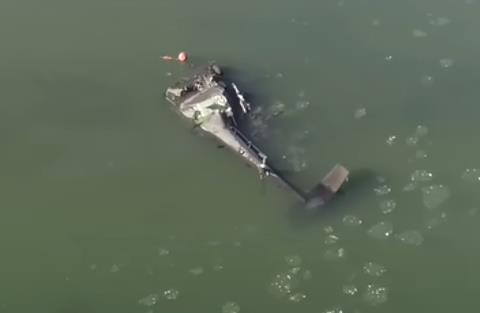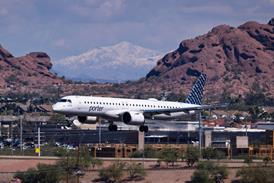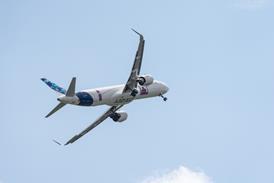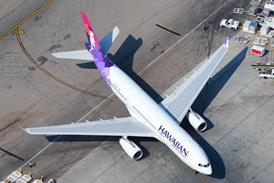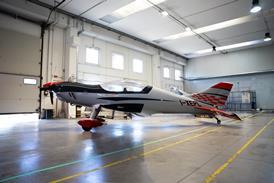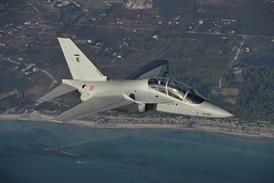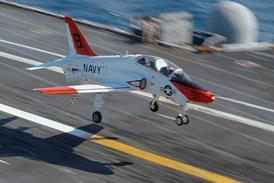US investigators are still working to align data from flight recorders, radar and air traffic control transmissions to clarify the timeline of the mid-air collision over Washington.
While the flight-data recorder for the Sikorsky UH-60 Black Hawk helicopter involved is being analysed, the National Transportation Safety Board says it does not contain timestamps – and that these will need to be created manually.
“[This] requires additional time to validate,” it states.
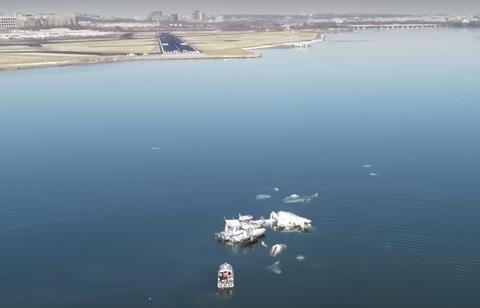
US Navy and other recovery personnel have retrieved the MHIRJ CRJ700’s aft fuselage, as well as its right-hand engine and pylon, from the Potomac river into which the jet fell after colliding with a military helicopter on 29 January.
Lifting of the helicopter wreckage, which is also in the river, will be undertaken once retrieval of the regional jet is completed.
The inquiry says this work will take “several days”, adding that divers from the Federal Bureau of Investigation will search for smaller pieces of debris.
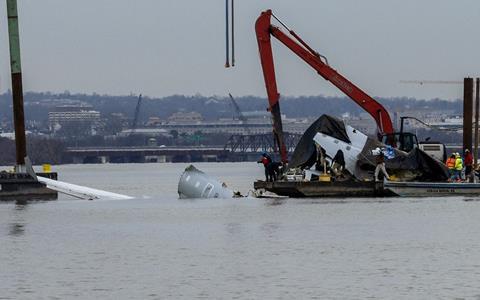
As part of the probe investigators have obtained training and flight logs for the jet and helicopter crews, as well as maintenance records of both aircraft.
“The human performance group is building several day histories for both flight crews to include their daily activities,” the inquiry states, adding that an air traffic control task group has interviewed personnel from all five staffed positions in Washington National airport’s control tower.
Sixty-four passengers and crew were on board the PSA Airlines CRJ700, which was arriving to Washington from Wichita. Three crew members were on the helicopter. None of the occupants survived the accident.
